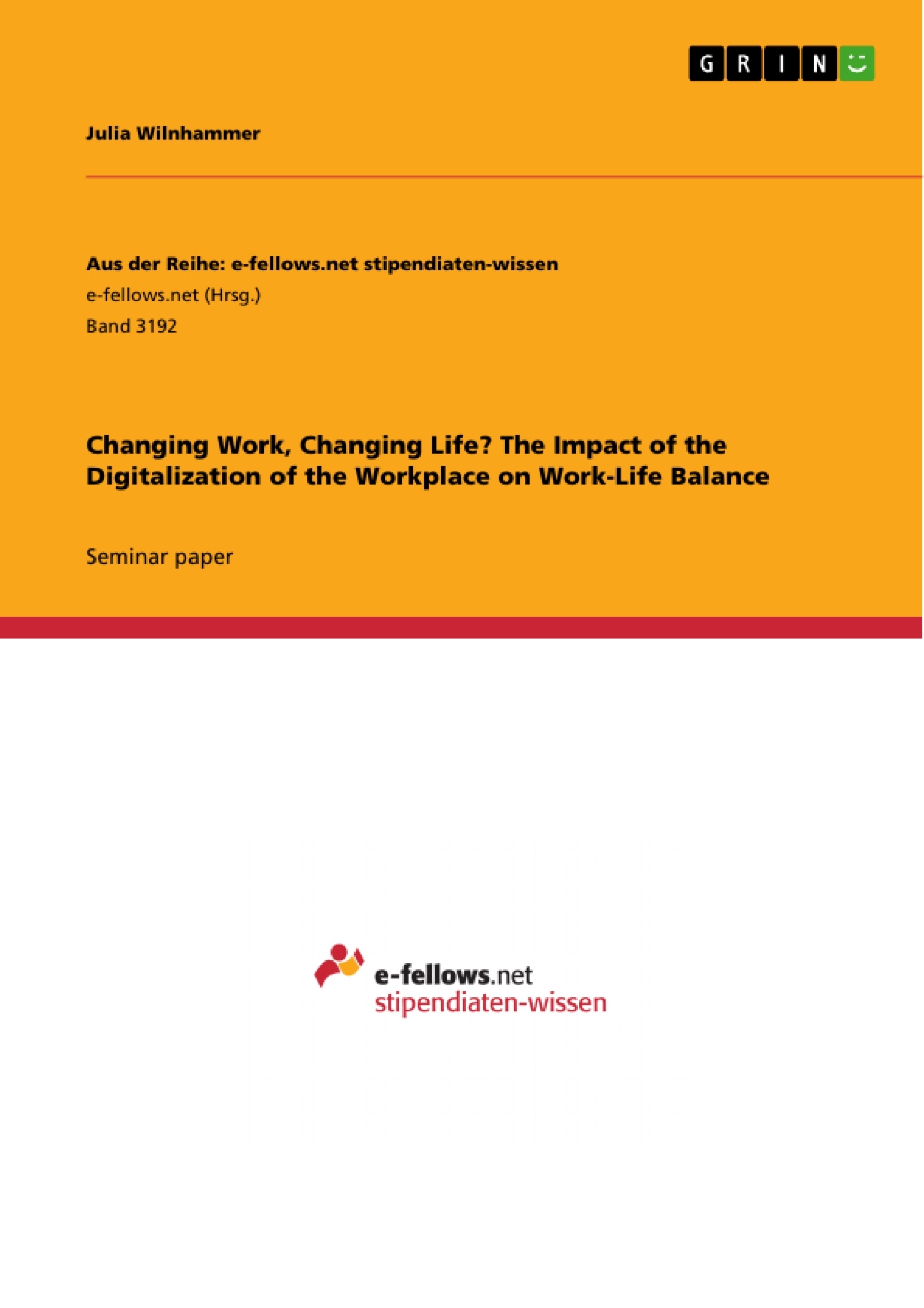Beside huge organizational benefits, the advent of digital technologies leads to intensified work demands for employees. The nature of information and communication technologies (ICTs) used at work and in private life may lead to feelings of digital stress and conflict between demands of work and life domains. The perception of this conflict hampers work-life balance when people’s desire is separated work and life domains (work-life segmentation). This term paper empirically examines, whether the level of digitalization of the workplace influences employees’ satisfaction with work-life balance, via an online survey of employees in Germany. Results indicate that digitalization of the workplace, through intensified electronic tool use, is not critical for lower satisfaction with work-life balance. However, theoretical investigation shows negative impacts of the digitalization of the workplace on the work-life balance of employees and emphasizes these impacts’ alarming importance for organizations redesigning work for a more supportive work environment.
Table of Contents
Introduction
Theory and Derivation of Hypotheses
Definition of Key Terms and Concepts
Digitalization of the Workplace
Work-Life Balance
Individual and Organizational Outcomes
Outcomes of the Digitalization of the Workplace
Outcomes of Work-Life Balance
Derivation of the Hypothesis and the Research Model
Method and Data
Data Collection and Measures
Sample
Results
Discussion
Conclusion
References
Appendix



